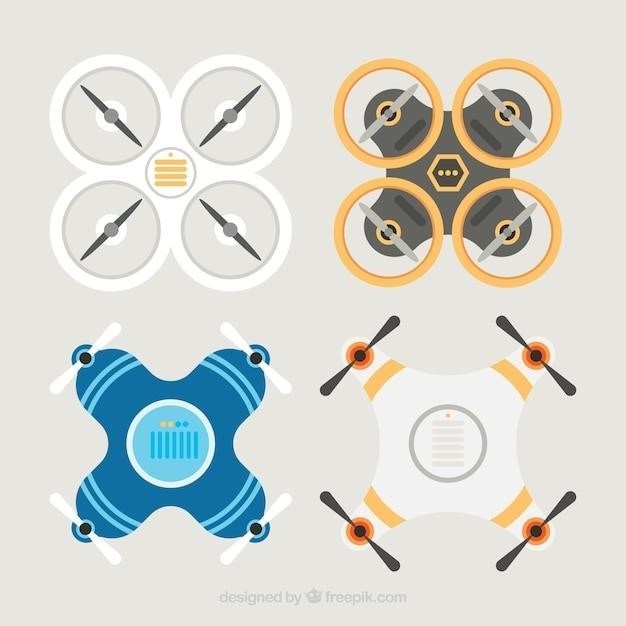This manual contains important safety, installation, and operating instructions for the charge controller. The following symbols are used throughout the manual⁚ … The Adventurer is an advanced charge controller for off-grid solar applications. Integrating highly efficient PWM charging, this controller increases battery life and improved system
Introduction
Welcome to the world of solar energy! This manual provides a comprehensive guide to understanding, installing, and operating your solar charge controller. This device plays a crucial role in your off-grid solar system, ensuring that your batteries are charged efficiently and safely. The charge controller acts as the brains of your system, managing the flow of energy from the solar panels to the batteries, protecting them from overcharging and deep discharge. By carefully reading and following the instructions in this manual, you can maximize the performance and longevity of your solar system, ensuring a reliable and sustainable energy source for your needs.
Safety Instructions
Your safety is our top priority. This solar charge controller operates with electricity, which can be dangerous if handled improperly. Before installing or operating this device, please read and understand these safety instructions carefully. Always disconnect the solar panels, batteries, and loads from the charge controller before performing any maintenance or repairs. Never attempt to modify or repair the charge controller yourself. Incorrect installation or use may result in electric shock, fire, or damage to the device. If you have any questions or concerns, please consult a qualified electrician or service technician.
System Overview
The solar charge controller is the central component of your off-grid solar system, responsible for regulating the flow of energy from your solar panels to your batteries. It efficiently manages the charging process, protecting your batteries from overcharging and ensuring optimal performance. The system typically consists of four main components⁚ solar panels, the charge controller itself, batteries, and a load (the devices you want to power). Each component plays a vital role in the overall functionality of the system, working together to provide a reliable and sustainable power source.
Solar Panel
The solar panel is the heart of your off-grid solar system, capturing energy from the sun and converting it into direct current (DC) electricity. It consists of photovoltaic cells, typically made of silicon, which generate electricity when exposed to sunlight. The size and wattage of your solar panel will determine how much power it can generate, directly impacting the amount of energy available to charge your batteries and power your devices. Proper installation and orientation of the solar panel are crucial for maximizing energy output and ensuring optimal system performance.
Charge Controller
The charge controller is the brain of your solar system, acting as a vital intermediary between your solar panels and batteries. Its primary role is to regulate the flow of electricity from the solar panels to the batteries, ensuring they are charged safely and efficiently. Charge controllers prevent overcharging, which can damage batteries, and also prevent over-discharging, which can reduce their lifespan. They come in two primary types⁚ Pulse Width Modulation (PWM) and Maximum Power Point Tracking (MPPT). PWM controllers are simpler and less expensive but less efficient, while MPPT controllers are more efficient but costlier. The choice depends on your system size, budget, and specific requirements.
Battery
The battery is the heart of your off-grid solar system, storing the energy harvested by your solar panels for later use. Choosing the right battery is crucial for efficient system operation and longevity. There are several types available, each with its own characteristics⁚ lead-acid, lithium-ion, and AGM (Absorbed Glass Mat) batteries. Lead-acid batteries are the most common and affordable, but they have lower energy density and require more maintenance. Lithium-ion batteries offer higher energy density, longer lifespan, and faster charging, but they are more expensive. AGM batteries are a type of lead-acid battery with improved performance and durability. Understanding your specific energy needs and budget will help you select the appropriate battery type for your system.
Load
The load represents the devices and appliances you want to power with your solar system. It’s essential to understand the power consumption of your load to determine the appropriate size of your solar panels, charge controller, and battery bank. The load can be anything from lights and fans to refrigerators, televisions, and even small appliances. The charge controller regulates the flow of power from your solar panels to your load, ensuring that your appliances receive the correct voltage and current. Before connecting your load, carefully review the charge controller’s specifications and ensure that the load’s power requirements are within the controller’s limits to prevent damage or malfunction.
Installation
Proper installation of your solar charge controller is crucial for ensuring safety, optimal performance, and longevity of your system. Before starting any installation, disconnect all power sources and consult qualified electrical professionals if you are unsure about any step. Begin by carefully selecting a location for your charge controller, ensuring it is well-ventilated, dry, and protected from direct sunlight. Consider the proximity to your battery bank, solar panels, and the load to minimize wire runs and potential voltage drops. Securely mount the controller to a sturdy surface using appropriate fasteners, taking care not to damage the device.
Connecting the Battery
Connecting the battery to the charge controller is a critical step in the installation process and should be performed with utmost care. Always disconnect the battery from any other devices before connecting it to the charge controller. The battery cables should be properly sized to handle the amperage of your system, typically using thick, heavy-duty cables for optimal performance. Carefully connect the positive (+) terminal of the battery to the positive (+) terminal of the charge controller using a properly sized terminal lug or connector. Repeat the process for the negative (-) terminals, ensuring a secure and tight connection. Double-check all connections to ensure there are no loose wires or potential for accidental contact.
Connecting the Solar Panel
Connecting the solar panel to the charge controller is a straightforward process, but it’s essential to follow the instructions carefully to ensure proper functionality and safety. First, locate the positive (+) and negative (-) terminals on your solar panel and the corresponding terminals on the charge controller. Connect the positive (+) wire from the solar panel to the positive (+) terminal on the charge controller, using a properly sized wire and connector. Repeat this process for the negative (-) wires, ensuring a secure connection at each end. If your solar panel has multiple strings, connect each string in parallel to the charge controller terminals. Always double-check the connections for any loose wires or potential for accidental contact. Once the connections are secure, you can proceed to connect the load to the charge controller.
Connecting the Load
Connecting the load to the charge controller allows you to use the stored energy from your battery bank. Locate the load terminals on the charge controller, typically labeled “+” and “-“. Connect the positive (+) wire from your load device to the positive (+) terminal on the charge controller. Similarly, connect the negative (-) wire from your load to the negative (-) terminal on the charge controller. Ensure that the wire gauge used is appropriate for the load’s current draw and the distance between the load and the charge controller. It’s crucial to use the correct polarity when connecting the load; reversing the wires can damage your devices or the charge controller. Use a fuse or circuit breaker on the load side of the charge controller for added safety and protection against overcurrents. Once the load is connected, you can turn on the load and start using the stored solar energy.
Operation
The solar charge controller plays a crucial role in managing the flow of energy from your solar panels to the battery bank and load. It ensures efficient charging of the batteries while preventing overcharging and deep discharge. The charge controller typically operates in different modes, such as bulk charging, absorption charging, float charging, and equalization charging, to optimize battery performance and lifespan. LED indicators on the charge controller provide visual feedback about its operational status, such as charging current, battery voltage, and fault conditions. Some charge controllers allow for customizable settings, like battery type, charging current limits, and load output control. Refer to the specific user manual for your charge controller to understand its operational modes, LED indicators, and settings to get the most out of your solar system.
Charging Modes
Solar charge controllers utilize different charging modes to effectively manage battery charging and ensure optimal performance and longevity. The most common modes include⁚ Bulk Charging, where the battery is rapidly charged at a high current until it reaches a predetermined voltage. Absorption Charging, which follows bulk charging and maintains a constant voltage to fully charge the battery. Float Charging, where the controller applies a low trickle charge to maintain the battery’s full charge and prevent over-discharge. Equalization Charging, occasionally used for lead-acid batteries, equalizes the charge levels of individual cells to prevent stratification and extend battery life. The specific charging modes and their parameters may vary depending on the charge controller model and battery type. Understanding these modes helps optimize battery charging and maximize system efficiency.
LED Indicators
Many solar charge controllers feature LED indicators to provide a visual representation of the system’s status and operating conditions. These indicators typically illuminate in different colors or patterns to convey information about the charging process, battery voltage, and potential errors. For example, a green LED might indicate that the battery is fully charged, while a red LED could signal an over-voltage condition or a fault. The specific meaning of each LED indicator is usually detailed in the charge controller’s user manual. By observing the LED indicators, users can quickly assess the system’s health and troubleshoot any issues that may arise. Understanding the LED indicators is crucial for effective system monitoring and maintenance.
Settings
Solar charge controllers often offer adjustable settings to optimize their performance and tailor them to specific system requirements. These settings may include parameters like battery type (e.g., lead-acid, lithium-ion), charge current, and voltage limits. Configuring these settings correctly is essential for maximizing battery life and ensuring safe operation. For example, setting the correct battery type ensures that the controller applies the appropriate charging profile for the chosen battery chemistry. Adjusting charge current allows users to fine-tune the charging rate based on the battery’s capacity and the available solar power. Voltage limits help protect the battery from overcharging or deep discharge. The user manual will provide detailed instructions on how to access and modify these settings.
Troubleshooting
Solar charge controllers are typically designed to be robust and reliable, but issues can arise. Common troubleshooting steps involve inspecting the connections for loose wires or corrosion, ensuring proper fuse operation, and verifying the solar panel’s output. If the controller exhibits malfunctions like failure to charge, excessive heat, or incorrect voltage readings, it’s crucial to consult the user manual for specific troubleshooting guides. The manual may provide diagnostic codes or LED indicator patterns to help identify the root cause. In some cases, resetting the controller by disconnecting and reconnecting the battery or solar panel may resolve temporary issues. If the problem persists, contacting the manufacturer or a qualified technician for assistance is recommended.
Maintenance
Regular maintenance is essential for ensuring optimal performance and longevity of your solar charge controller. Start by visually inspecting the controller for any signs of damage, corrosion, or overheating. Check the connections for looseness or corrosion, and tighten them if necessary. Ensure proper ventilation to prevent overheating and ensure that the controller is not exposed to excessive dust or moisture. Keep the controller clean by using a soft cloth and mild detergent. Periodically check the fuse for signs of damage or blowing, and replace it if required. Consult the user manual for specific maintenance recommendations and intervals based on your model. Additionally, ensure that your batteries are properly maintained and receive regular charging cycles to prolong their life.
Warranty
This solar charge controller is covered by a limited warranty against defects in materials and workmanship for a specified period from the date of purchase. The specific warranty terms and conditions, including the duration of coverage, are outlined in the warranty document provided with the product. The warranty typically covers defects in the controller’s internal components, such as the circuitry and electronic components. However, it may not cover damage resulting from improper installation, misuse, negligence, or environmental factors. For warranty claims, contact the manufacturer or authorized distributor with proof of purchase and a detailed description of the issue. The manufacturer reserves the right to repair, replace, or refund the product at their discretion. Keep the original packaging and documentation for future reference.
Technical Specifications
The technical specifications of the solar charge controller provide detailed information about its capabilities and operating parameters. These specifications typically include⁚
- Input voltage range⁚ The range of voltage that the controller can accept from the solar panel(s).
- Output voltage⁚ The voltage provided to the battery bank.
- Maximum charging current⁚ The maximum current that the controller can deliver to the battery.
- Battery type compatibility⁚ The types of batteries that the controller is designed to charge (e.g., lead-acid, lithium-ion).
- Charging modes⁚ The different charging stages employed by the controller to optimize battery health (e.g., bulk, absorption, float).
- Protection features⁚ Safety features included in the controller to prevent damage from overcharging, over-discharging, short circuits, and other potential issues.
- Operating temperature range⁚ The temperature range within which the controller can operate efficiently.
- Dimensions and weight⁚ The physical size and weight of the controller.
These technical specifications are crucial for ensuring compatibility with your solar system components and for understanding the limitations and capabilities of the charge controller.
Appendix
The Appendix of a solar charge controller instruction manual typically includes supplemental information that may not be essential for everyday operation but can be helpful for advanced users or troubleshooting. This might include⁚
- Wiring diagrams⁚ Detailed schematics showing the connections between the solar panel, charge controller, battery, and load.
- Troubleshooting guide⁚ A comprehensive list of common problems, their possible causes, and solutions.
- Technical specifications⁚ Expanded details of the controller’s features, parameters, and operating limits.
- Warranty information⁚ Details about the manufacturer’s warranty coverage, terms, and conditions.
- Contact information⁚ Contact details for the manufacturer or distributor for technical support, repairs, or other inquiries.
- Frequently Asked Questions (FAQs)⁚ Answers to common questions about the product and its operation.

The Appendix serves as a valuable resource for users who need further clarification, troubleshooting assistance, or additional technical information about the solar charge controller.


